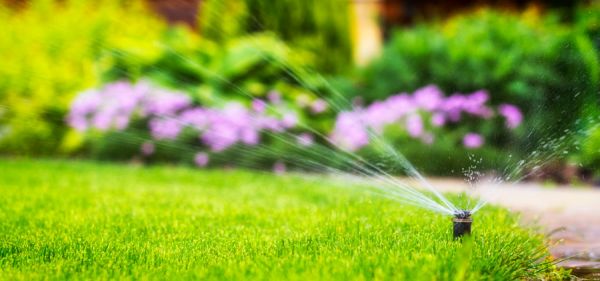Lawn watering tips for summer
Posted on:May 31, 2019
 Like the rest of us, you’re probably enjoying all of the free watering service nature has provided us this spring. But soon we’ll be in the full throes of the summer’s relentless heat, looking to turn those lush, green lawns into battered versions of themselves. Which is why you need to have a solid watering strategy to keep your lawn healthy this season.
Like the rest of us, you’re probably enjoying all of the free watering service nature has provided us this spring. But soon we’ll be in the full throes of the summer’s relentless heat, looking to turn those lush, green lawns into battered versions of themselves. Which is why you need to have a solid watering strategy to keep your lawn healthy this season.
Here are some key things to consider when developing your plan:
SOURCE
Without question, a full irrigation system with a digital controller is your best bet at helping you manage your watering schedule and usage volumes. However, if that’s not in the cards, there are plenty of less expensive sprinkler options out there. From long-range, pulsating sprinklers to wide, oscillating sprinklers to traveling sprinklers, you can effectively cover large sections of your yard with relative ease. You can even get a separate water hose timer to help you control time spent watering.
DEPTH
You’ll want to water your lawn with enough volume to soak to a depth of 6-8 inches, where turfgrass roots grow. This roughly equates to one inch of water a week, whether by rain or by watering. It’s important to determine the amount of time it takes in relation to the water volume necessary to hit that one-inch threshold.
MONITOR THE SOIL
During your first watering cycle, check the soil every 15 minutes to see how deep the water has penetrated. Once you measure to 6-8 inches, mark the time. That will be your benchmark for planning your watering schedule.
HOW OFTEN
It’s always better to water deeply 2-3 days a week versus shallow watering daily. If you know it takes roughly one hour to achieve a soaking depth of 6-8 inches, you can divide your schedule into two days of 30-minute watering each.
TIME OF DAY
Most lawn professionals all agree that the best time of day to water is in the early morning, ideally finishing your full run cycle before 10 a.m. The morning works best for several reasons: 1) The temperature is cooler, keeping evaporation to a minimum. 2) Less evaporation means more water is making its way into the ground. 3) Keeps your lawn temperature cooler throughout the heat of the day, reducing stress. 4) Watering in the late evening can keep your lawn wet overnight, making it susceptible to disease and fungus.
TYPES OF GRASS
As you know, there are cool-season grass types and warm-season grass types. Cool grasses like fescue and Kentucky bluegrass generally require more water during the hotter stretches of summer compared to warm-season counterparts, like Bermuda and Zoysia. The weather where you live and ground soil will also play a role in determining which types of grasses are ideal for your lawn and how much you’ll need to water.
Make sure you keep your watering consistent throughout the season and adjust to compensate for increased temperatures. Remember, nothing is rougher on a lawn than watering it haphazardly and at random times throughout the day. Have a proper plan and execute it. Your lawn will thank you for it.

